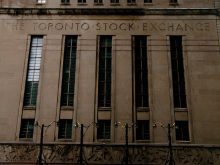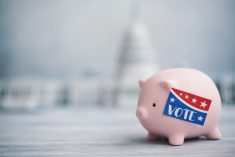The current U.S. bear market is brought to you by an unwinding of speculative excess, increasing inflation driving interest rates, Putin’s war in Ukraine and fears of a recession. A recession is defined as two quarters of negative growth. First quarter U.S. growth was negative and if the second quarter comes in negative it will meet the technical definition. We’ll know by the time you read this.
The Canadian economy and the TSX fared better early in the year, but as I write the TSX is quickly catching COVID and is now also approaching bear market status, defined as a decline of 20 per cent or more.
Gross domestic product (GDP) is a measurement of the entire value of goods and services produced and is calculated as government spending plus consumer spending plus business investment plus exports minus imports, which equals GDP.
Read Also

Gentle treatments for pain in the neck
Heading toward year-end, people unknowingly tense up against the cold and busyness, causing neck pain that can often be treated with appropriate support and gentle mobility, athletic therapist Kathlyn Hossack says.
It is easy for governments to temporarily manipulate GDP through spending. Our governments normally represent an outsized 44 per cent of GDP, and in 2020 the Canadian government spent approximately 33 per cent more attempting to make up for shutdowns. By comparison, the U.S. government increased spending by about 23 per cent and Sweden only increased spending by seven per cent.
Another key formula is number of workers times output per worker equals GDP. The only two ways to increase GDP is through the number of people and/or the efficiency per person. A huge concern is Canadian per capita GDP is the same as it was a decade ago, while the United States has grown it by 33 per cent. That is a huge divergence.
The issues I wrote about prior to COVID-19 have worsened. From February 11, 2020, I wrote, “The real Canadian economy is sickly, with tepid GDP growth being driven by residential ‘investment,’ public sector employment, deficits, and immigration at almost double mid-decade levels.” Business-repellent policies combined with weak commodities reduced business investment, without which worker efficiency is stagnant necessitating immigration for GDP growth. Residential “investment” appears in quotation marks because I don’t consider a house a true investment but merely an asset. It produces nothing after it’s built, whereas business investment contributes to GDP long into the future.
That said, all negatives embed some positives and vice versa. Eventually the chickens come home to roost and when governments are forced through financial markets (higher interest rates) to cut spending it will drag on GDP. In an era of tight labour that would be positive as it frees people for the private sector. Another negative/positive yin-yang is that while imports are a negative, they also show up positively in consumer spending.
ECONOMY REMAINS A CONCERN
The direction of the Canadian economy remains concerning because of the housing bubble which peaked at 10.5 per cent of GDP versus previous peaks of 7.0 per cent, high consumer debt and stratospheric public sector debts with Canada outspending almost all nations on COVID-19 support. I am, however, less concerned about the direction of our stock market. Valuations in Canada are better than the United States, our resource sector is coming back to life and many companies have presence in the United States, which has much healthier consumer debt levels.
Until June, the bear market was largely isolated to speculations and very expensive high-growth-oriented companies. More recently, a rapid boost in interest rates cast a pall across all sectors, with recessionary fears taking hold. The U.S. market had its fourth-worst first six months of the year in a century and holding bonds didn’t help.
Central bankers who initially called spiking inflation transitory now appear panicky. Thirty-year U.S. mortgages doubled from 2.75 per cent to more than 5.5 per cent and are now slightly higher than any time over the last decade. Five-year Canadian mortgages and bank prime have similarly doubled. Long-duration bonds, which go down in value as interest increases, lost as much value as stocks. For example, the iShares 20+ Year Treasury Bond exchange-traded fund (ticker TLT) was down about 25 per cent.
A lot has changed in a few months. Nobody can predict the short-term economy or stock market repeatedly. If we are in recession, it is a weird one with low unemployment. We are fortunate to have access to greater energy supplies than Europe, even though we deal with similar supply-restricting inflationary policies. Further increases in oil, natural gas or interest rates could precipitate a recession. Layoffs and bankruptcies are beginning in some tech areas like crypto companies, but those workers should easily find replacement jobs.
I continue to be more positive than negative. The bear market is providing some enticing valuations. My approach is to keep methodically moving forward to find value where it exists.
















